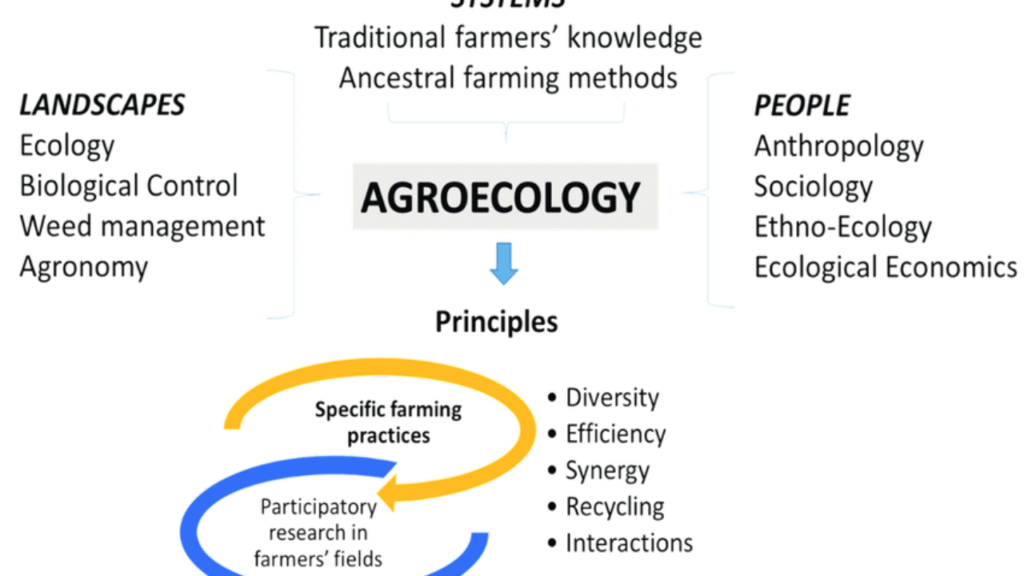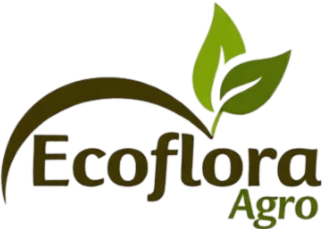
Modern industrial farming has brought increased yields—but also degraded soil, poisoned water, and harmed biodiversity. As the world looks for alternatives that nourish both people and the planet, agroecology emerges as a holistic solution rooted in designing farms based on natural ecosystems. This article dives into the principles of agroecology, how it mimics nature, and why it’s becoming the foundation for resilient, future-ready farming.
What is Agroecology?
Agroecology is not just a set of farming techniques—it is a science, practice, and movement that seeks to harmonize agriculture with the ecological processes of the environment. It integrates traditional knowledge, ecological principles, and social equity to build farming systems that are productive, sustainable, and biodiversity-rich.
Unlike industrial agriculture, agroecology doesn’t impose systems onto the land—it observes, learns, and then designs farm ecosystems that work with nature, not against it.
Key Principles of Agroecological Design
Agroecology is guided by ecological principles that mimic the way ecosystems function in the wild. Some of the core design principles include:
| Principle | Description |
|---|---|
| Diversity | Promotes species, genetic, and functional diversity across crops and animals |
| Synergy | Encourages interdependence between plants, animals, soil, and microorganisms |
| Soil Health | Focuses on organic matter, microbial life, and minimal disturbance |
| Closed Nutrient Cycles | Recycles nutrients within the system using compost, mulch, and cover crops |
| Resilience | Enhances natural pest control and climate adaptation |
| Cultural Knowledge | Integrates indigenous and local farming knowledge systems |
How Farms Can Mimic Ecosystems
Natural ecosystems are complex, interconnected, and self-regulating. Agroecological farms aim to replicate this by:
- Replacing monocultures with polycultures
Growing multiple species together increases biodiversity and reduces pests. - Integrating crops and livestock
Animal waste fertilizes the land, while diverse forage boosts animal health. - Encouraging beneficial insects and microbes
Farms use flowering plants and hedgerows to attract natural predators. - Designing layered cropping systems
Like a forest, farms can use vertical space: root crops, vines, fruit trees, and ground cover. - Managing water like a watershed
Swales, ponds, and mulch help retain and recycle water.
Benefits of Agroecology-Based Farm Design
| Benefit | Impact |
|---|---|
| Improved Soil Fertility | Natural composting and cover cropping enhance soil structure and nutrients |
| Reduced Chemical Use | Natural pest and weed control lowers dependence on synthetic inputs |
| Higher Biodiversity | Attracts pollinators, pest predators, and maintains ecosystem balance |
| Resilience to Climate | Diverse systems are less vulnerable to drought, disease, or market shifts |
| Community Empowerment | Farmers regain autonomy using local seeds and shared knowledge |
Agroecological Practices in Action
Let’s look at practical applications on farms following ecological principles:
| Practice | What It Does | Agroecological Benefit |
|---|---|---|
| Agroforestry | Combines trees with crops and animals | Enhances microclimates, biomass, income |
| Intercropping | Grows different species together | Increases resilience and productivity |
| Composting | Recycles organic waste into rich soil | Closes nutrient loops |
| No-Till Farming | Reduces soil disturbance | Protects microbes and prevents erosion |
| Biological Pest Control | Uses natural enemies to suppress pests | Reduces pesticide use |
Overview Table: Designing Farms as Ecosystems
| Element | Agroecological Strategy |
|---|---|
| Crop Management | Polycultures, rotations, companion planting |
| Soil Fertility | Compost, biofertilizers, minimal tillage |
| Pest and Weed Control | Beneficial insects, allelopathy, crop diversity |
| Water Use | Mulching, swales, drip systems, rain harvesting |
| Energy and Nutrient Flow | On-farm recycling, local inputs |
| Social Systems | Community knowledge, farmer-to-farmer learning |
Agroecology vs. Industrial Farming
| Feature | Industrial Farming | Agroecology |
|---|---|---|
| Inputs | Synthetic fertilizers, pesticides | Natural inputs, recycling systems |
| Cropping System | Monoculture | Biodiverse polycultures |
| Soil Health | Often degraded due to overuse | Enhanced through organic practices |
| Climate Adaptability | Low | High due to diversity and resilience |
| Farmer Knowledge | Top-down, expert-driven | Bottom-up, community and tradition-based |
| Environmental Impact | High carbon, pollution | Low emissions, supports biodiversity |
Agroecology Around the World
- Latin America: Movements like La Via Campesina are pushing for agroecology as food sovereignty.
- India: Natural farming models (e.g., Subhash Palekar’s ZBNF) align with agroecological values.
- Africa: Farmer-managed natural regeneration (FMNR) is restoring degraded lands with native trees.
- Europe: Agroecology is being incorporated into sustainable food policies and organic farming frameworks.
What’s Next for Agroecological Design?
As climate change, soil degradation, and rural poverty worsen, agroecology offers a viable path forward. Scaling up agroecological farms will require:
- Policy support: Including subsidies for ecosystem services and training.
- Local innovation: Empowering farmers to co-create and share solutions.
- Research investment: Studying complex systems and long-term outcomes.
- Market access: Fair trade and local food systems to support agroecological producers.
3 Best One-Line FAQs
Q1: What is agroecological farm design?
It’s the practice of designing farms that mimic natural ecosystems to boost productivity and sustainability.
Q2: How does agroecology differ from organic farming?
Agroecology includes social justice, biodiversity, and ecological design beyond just avoiding chemicals.
Q3: Can agroecology feed the world?
Yes—when scaled properly, it can produce enough food while regenerating ecosystems.

